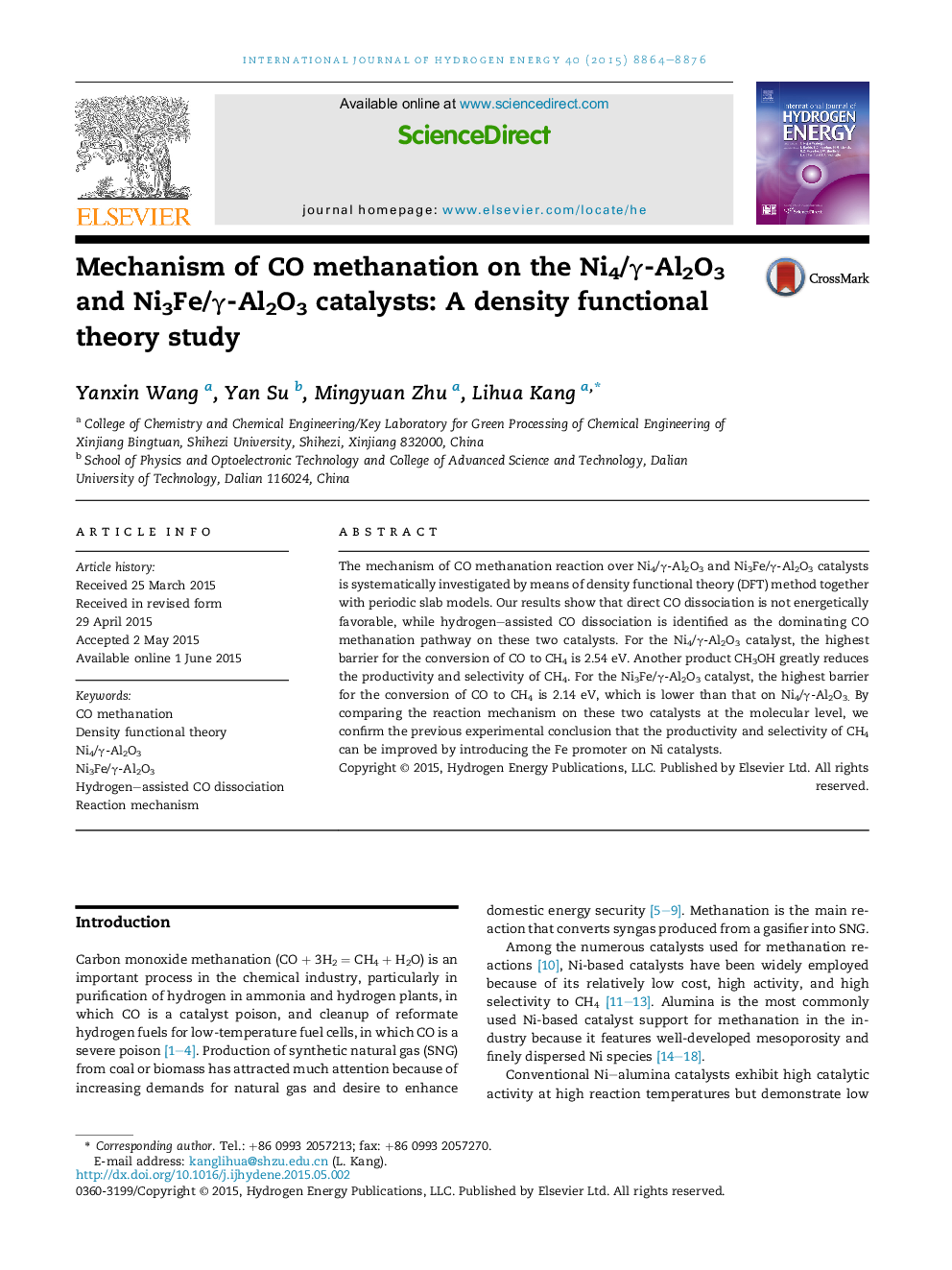| Article ID | Journal | Published Year | Pages | File Type |
|---|---|---|---|---|
| 1275126 | International Journal of Hydrogen Energy | 2015 | 13 Pages |
•We study mechanism of CO methanation on Ni4/γ-Al2O3 and Ni3Fe/γ-Al2O3 catalysts.•CO directly dissociation is not favored on these two kinds of catalysts.•CH3OH reduces the productivity and selectivity of CH4 on Ni4/γ-Al2O3 catalyst.•Higher activation barrier is needed for CO methanation on Ni4/γ-Al2O3 catalyst.•Introducing Fe into Ni catalyst improves productivity and selectivity of methane.
The mechanism of CO methanation reaction over Ni4/γ-Al2O3 and Ni3Fe/γ-Al2O3 catalysts is systematically investigated by means of density functional theory (DFT) method together with periodic slab models. Our results show that direct CO dissociation is not energetically favorable, while hydrogen–assisted CO dissociation is identified as the dominating CO methanation pathway on these two catalysts. For the Ni4/γ-Al2O3 catalyst, the highest barrier for the conversion of CO to CH4 is 2.54 eV. Another product CH3OH greatly reduces the productivity and selectivity of CH4. For the Ni3Fe/γ-Al2O3 catalyst, the highest barrier for the conversion of CO to CH4 is 2.14 eV, which is lower than that on Ni4/γ-Al2O3. By comparing the reaction mechanism on these two catalysts at the molecular level, we confirm the previous experimental conclusion that the productivity and selectivity of CH4 can be improved by introducing the Fe promoter on Ni catalysts.
Graphical abstractFigure optionsDownload full-size imageDownload as PowerPoint slide
